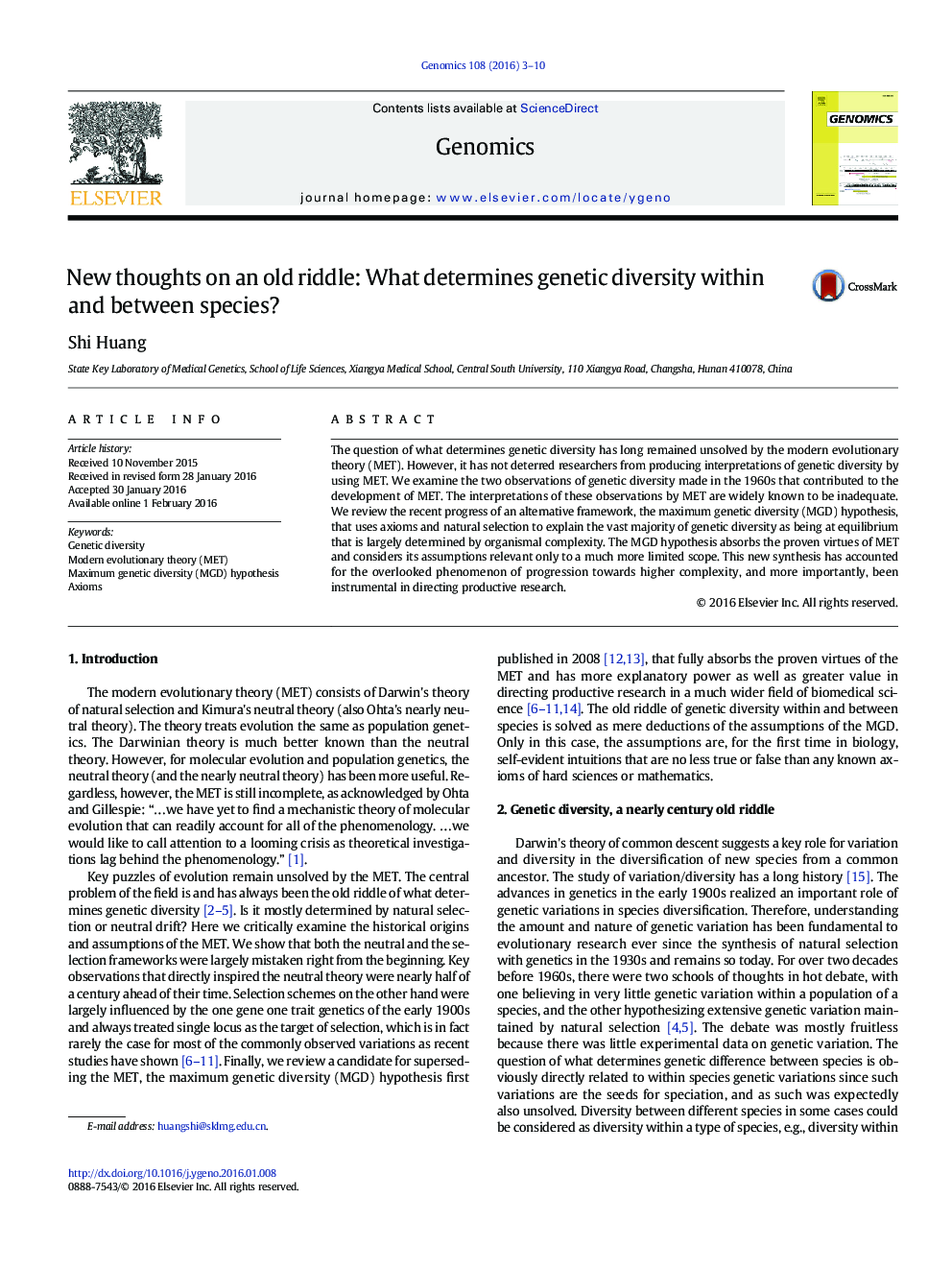| Article ID | Journal | Published Year | Pages | File Type |
|---|---|---|---|---|
| 2820538 | Genomics | 2016 | 8 Pages |
•Two key observations of genetic diversity made in the 1960s.•Weaknesses of the modern evolution theory•The common sense approach to the old riddle of genetic diversity•Practical values of the maximum genetic diversity (MGD) hypothesis
The question of what determines genetic diversity has long remained unsolved by the modern evolutionary theory (MET). However, it has not deterred researchers from producing interpretations of genetic diversity by using MET. We examine the two observations of genetic diversity made in the 1960s that contributed to the development of MET. The interpretations of these observations by MET are widely known to be inadequate. We review the recent progress of an alternative framework, the maximum genetic diversity (MGD) hypothesis, that uses axioms and natural selection to explain the vast majority of genetic diversity as being at equilibrium that is largely determined by organismal complexity. The MGD hypothesis absorbs the proven virtues of MET and considers its assumptions relevant only to a much more limited scope. This new synthesis has accounted for the overlooked phenomenon of progression towards higher complexity, and more importantly, been instrumental in directing productive research.
